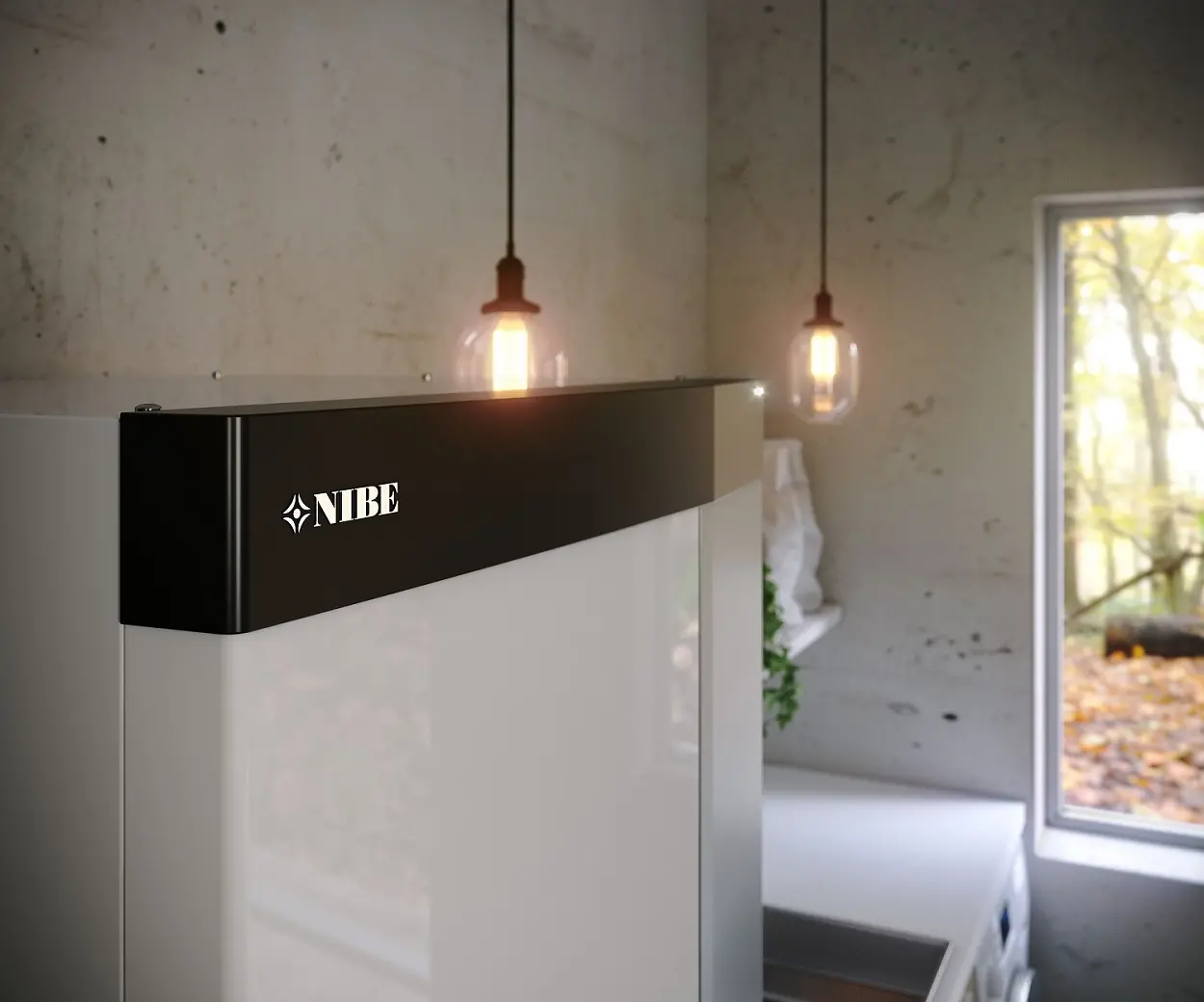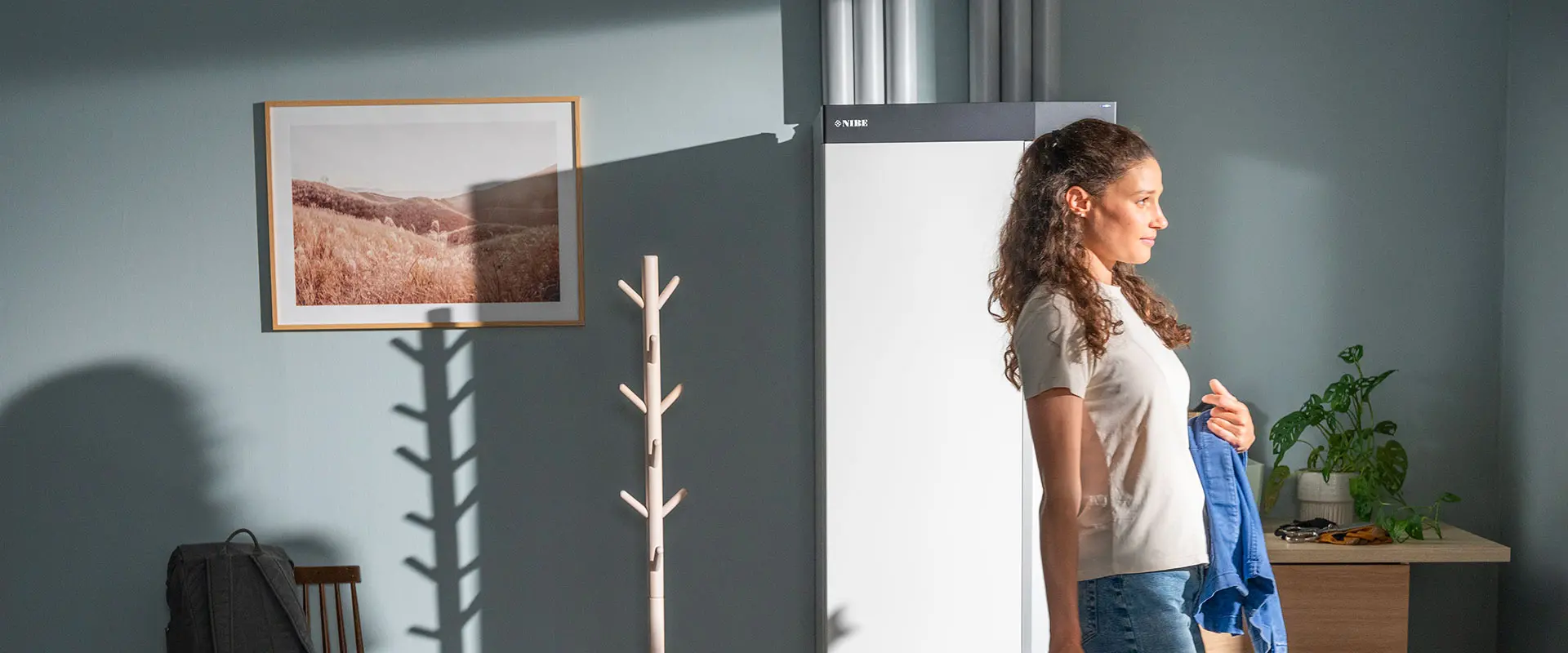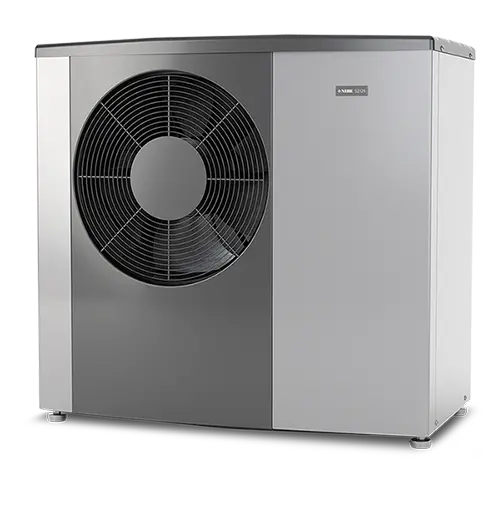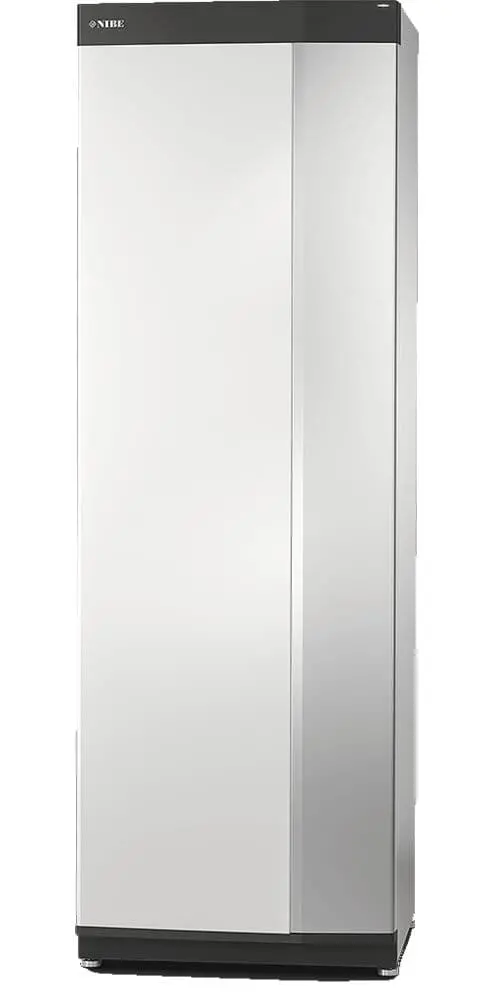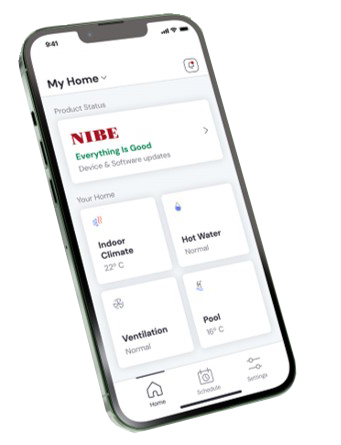Why connect your heat pump to solar panels?
With PV integration, your heat pump doesn’t just heat your home, it becomes part of a smart, connected energy system. By linking directly with your solar inverter, the heat pump can automatically adjust how and when it runs to make the best use of the energy your panels generate. Instead of exporting surplus electricity back to the grid for a minimal return, your home can use it as heat or hot water, giving you the benefit of free energy when you need it.
How does solar integration work with heat pumps?
With compatible inverters and the necessary accessories, your heat pump will be able to speak to and control the solar inverter, which in turn speaks to and controls the solar panels and battery.
With NIBE heat pumps, two setups are most common with solar inverters. Solar inverters communicate using a language called Modbus. Modbus comes in two common languages when used with solar inverters. These languages are Modbus TCP/IP and Modbus RTU. Depending on the language spoken by the solar inverter, varying setups are required.
| Communication Type | Connection | How they connect |
|---|---|---|
| Modbus RTU | Serial cable | Physical wire between heat pump controller and inverter |
| Modbus TCP/IP | Network (Ethernet or Wi-Fi) | Both connected to the same local network (router or switch) |

Setup One
Solar inverters using Modbus TCP/IP can connect directly with NIBE heat pumps over the network connection.
The heat pump becomes the "master" and the inverter becomes the "slave", meaning the heat pump controls what the inverter does.
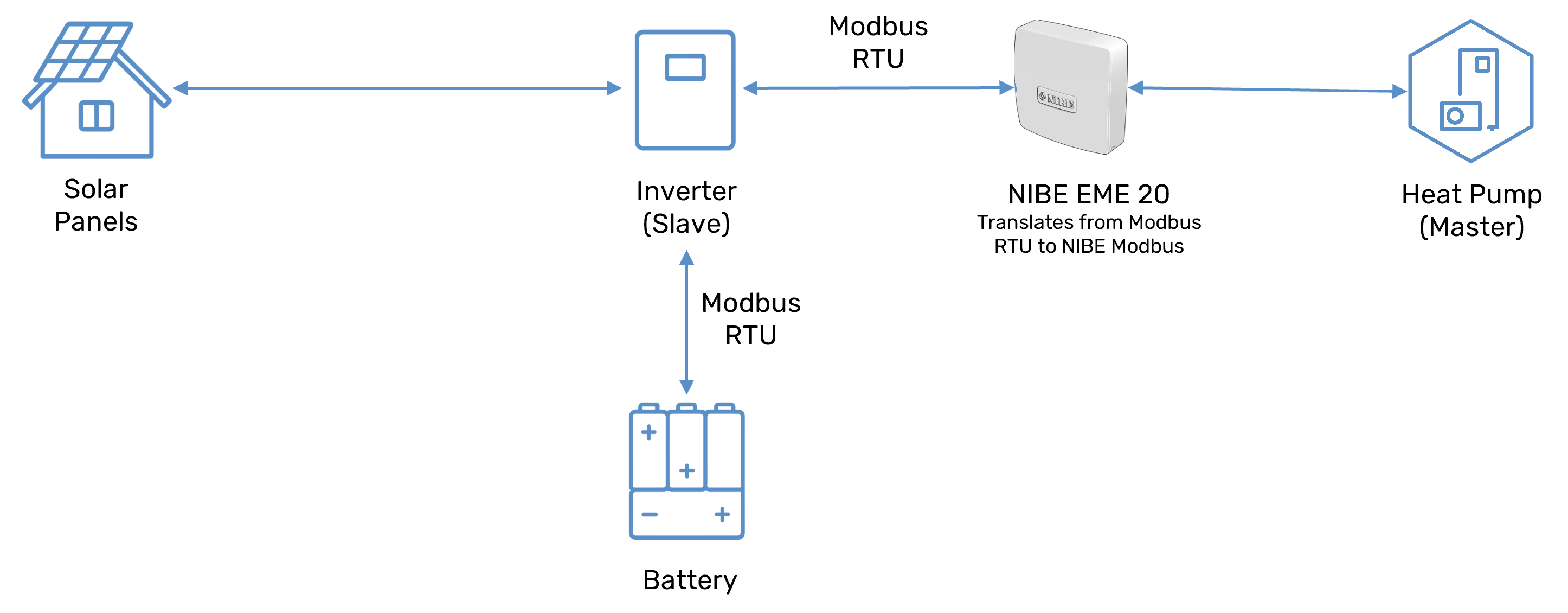
Setup Two
Solar inverters using Modbus RTU require an additional NIBE accessory to connect to the solar inverter - the EME 20.
The EME 20 takes the Modbus RTU language, which the heat pump doesn't understand, and converts it into a proprietary NIBE Modbus language understood by the heat pump.
Which inverters are compatible with NIBE heat pumps?
| For Modbus RTU Setups | For Modbus TCP/IP Setups |
|---|---|
| GoodWe GWxxK-DT | Fronius GEN24 |
| GoodWe GWxxK-SDT-20 | Fronius snap inverter (Symo) |
| Fronius (Primo, Galvo, Eco, Symo) | SMA Sunny Boy |
| SolarEdge (All with CPU > 2.0496) | SMA Tripower |
| Kostal (Plenticore Plus) | SolarEdge SE |
| Huawai Sun2000 | |
| Kostal | |
| Sungrow PV |
Modbus TCP/IP vs Modbus RTU - why choose one over the other?
The type of solar inverter you need will be based on your specific requirements, but below are some examples of how each can be applied in differing scenarios.
Modbus TCP/IP
Scenario: Modern detached family home – full heating and hot water system using renewable technologies
Setup:
The NIBE S2125 heat pump is connected to the inverter over the home’s existing Wi-Fi network using Modbus TCP/IP. The heat pump regularly polls the inverter for:
- Real-time solar power generation
- Battery state of charge
On a sunny afternoon, the system detects 4.8 kW solar generation, with the battery fully charged and 2.2 kW being exported.
The controller responds by:
- Increasing hot water cylinder temperature from 50 °C to 55 °C (thermal storage)
- Slightly preheating the home (e.g. from 20 °C to 21.5 °C) to store warmth during surplus generation
- At night, with no solar and battery state of charge at 15%, the system runs at a reduced load to reduce energy consumption.
Outcome:
A majority of the heat pump’s annual energy needs are met using solar or battery power.
Modbus RTU
Scenario: Retrofit in remote stone cottage – low-carbon upgrade with off-grid capability
Setup:
Due to limited internet availability, Modbus RTU was chosen for stable serial communication. The NIBE heat pump polls the inverter for:
- Battery charge level
- Solar generation rate
On a cloudy afternoon, battery charge is 65% with minimal solar generation. The heat pump allows hot water production to proceed at lower priority while maintaining space heating.
In the evening, a frost warning is received. The system checks that the battery is at 90%, grid status is offline.
The home is preheated to 20 °C to “store heat” ahead of expected power use, preserving battery later in the night.
Outcome:
- Heat pump remains fully operational during grid outages
- Comfort levels are maintained without manual intervention
- System runs entirely off-grid for extended periods during summer
- Modbus RTU overcomes networking limitations, offering robust and reliable communication
These are only indicative examples, if you are interested in solar panels combined with a NIBE heat pump you should consult a qualified installer, who will be able to design and install your system to your specification.
Excess Energy
What does the heat pump do if there is excess solar energy available?
If a PV surplus occurs, where the battery is fully charged and the panels are still generating electricity, the heat pump can respond in a number of ways.
- Boosting hot water - the heat pump can boost the hot water temperature. For example on a NIBE heat pump, it could set the hot water mode to "high" to use some of the excess energy.
- Pre-heat your home - If you have a schedule, for example, to turn the heating on at 17:00, the heat pump could instead bring your heating on at 15:00. That way, you're still meeting your heating goals without wasting any free energy.
If both of the above have already taken place and there is still excess energy available, the heat pump can, if applicable, utilise the energy for any additional heat or cooling sources it has available. It could use the excess energy to generate heat to send to a pool, to heat the pool. If your system has been designed to incorporate cooling with the heat pump, it could use the excess energy to increase the circulation pump speed, to increase the cooling effect.
If all of these have taken place and there's still excess energy, the remaining will be exported back to the grid.
It's important to note that the heat pump will only do as you program it to do - it won't arbitrarily turn your heating on or boost hot water when excess energy is available. It'll only follow the logic that it is set up to follow.
By intelligently managing surplus solar energy in this way, the system maximises the value of your home grown energy. Instead of exporting electricity back to the grid for minimal return, that energy is redirected into your home, in turn reducing running costs, increasing comfort and improving self-consumption.
This approach not only helps homeowners make better use of their renewable investment but also supports a more balanced and sustainable energy system overall.
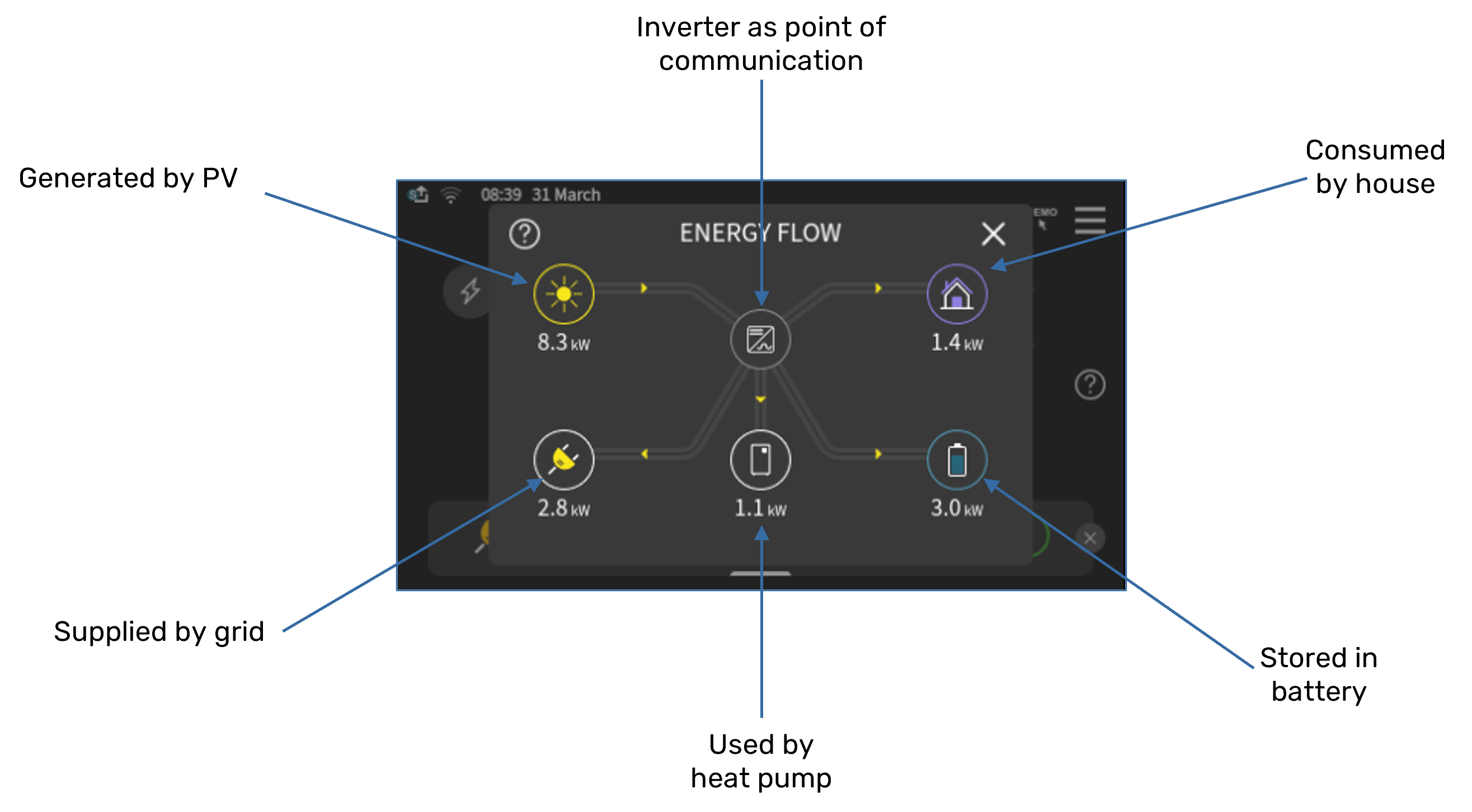
Energy Flow
With the S-Series controller, get a top-level view of the energy flow throughout your home when connected to a solar inverter.
See exactly how your home generates, stores, and uses energy in real time, helping you make the most of your solar power and minimise grid reliance.
